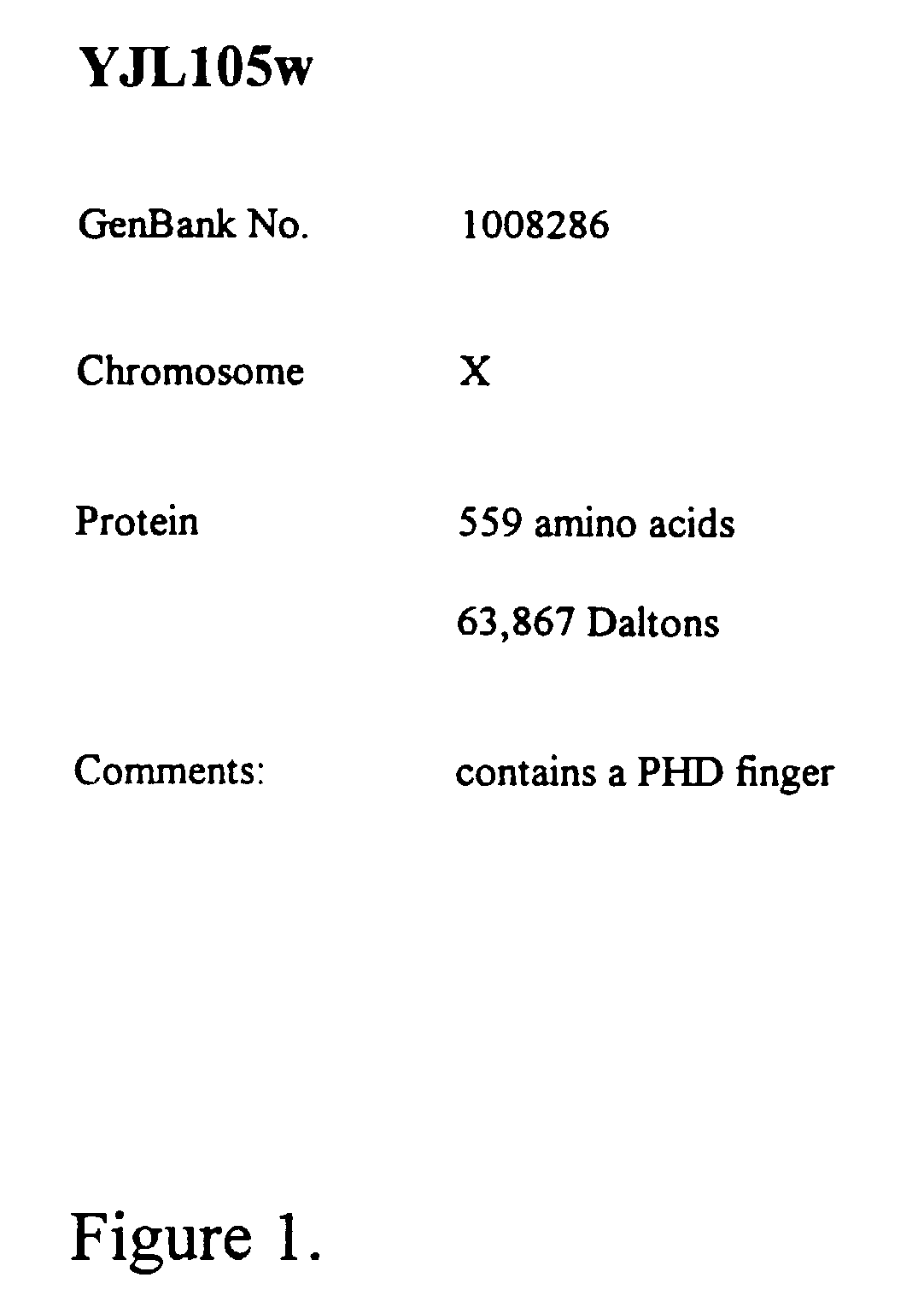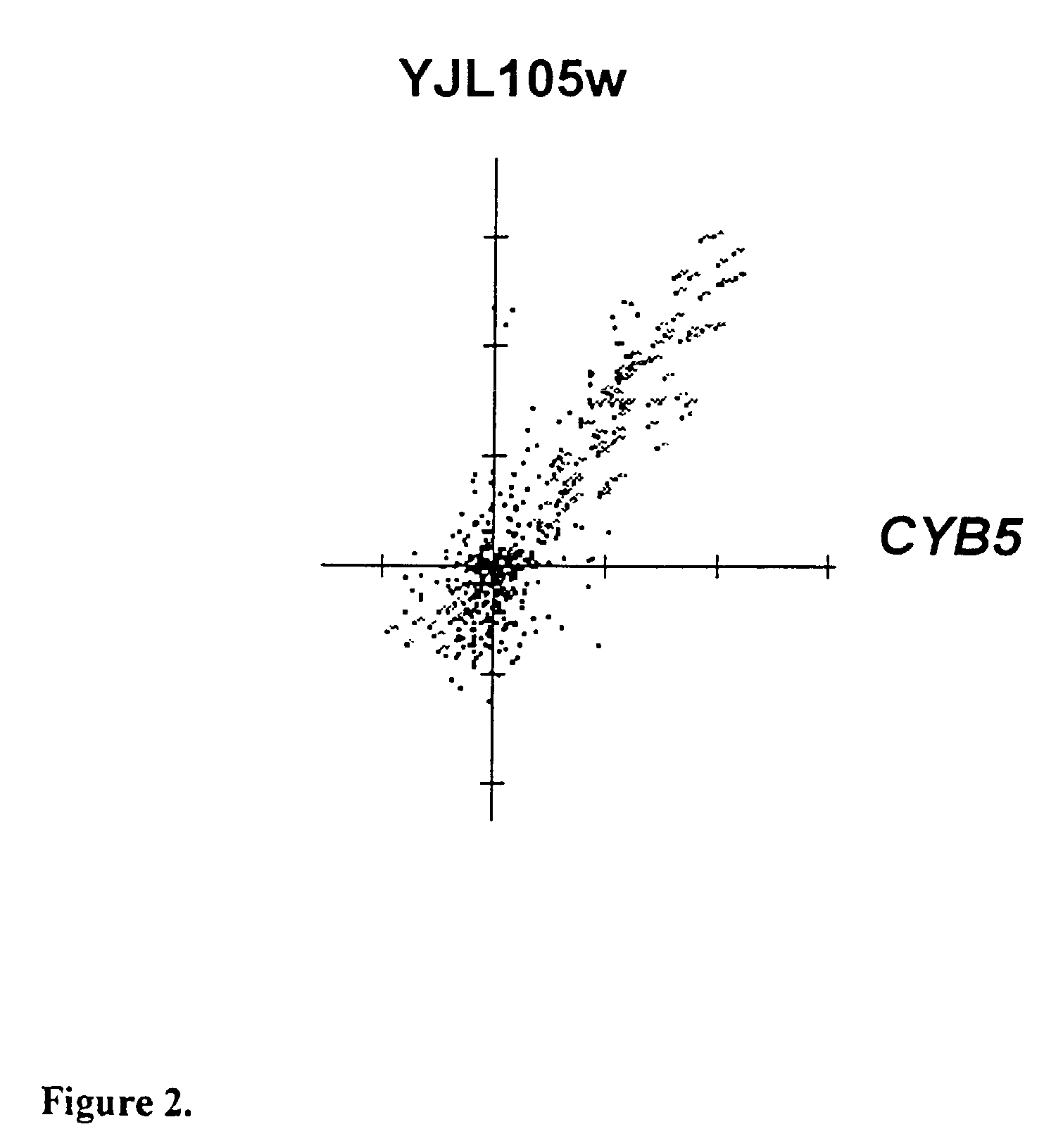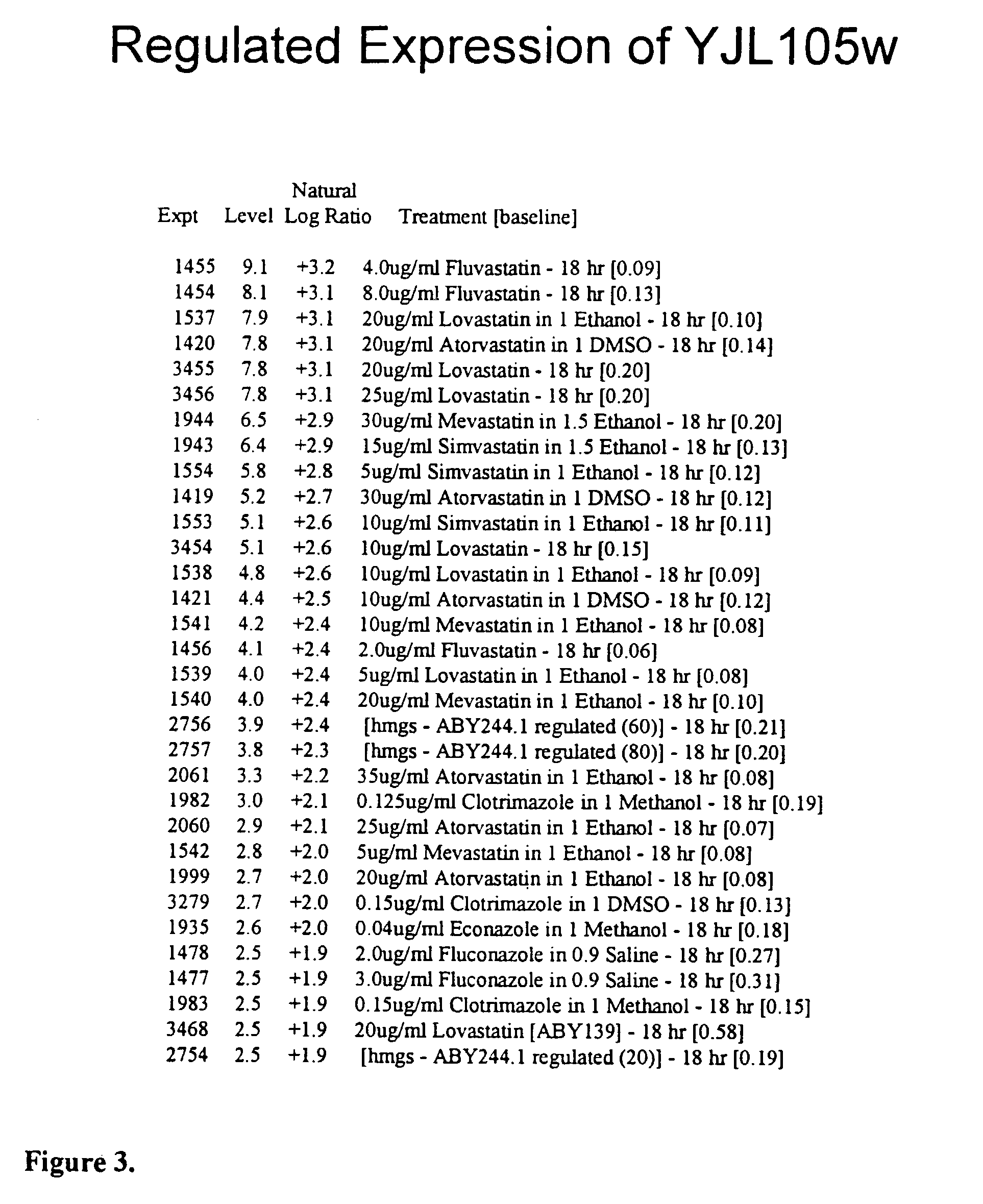Methods for the identification of inhibitors of an isoprenoid metabolic pathway
a metabolic pathway and inhibitor technology, applied in the field of methods for the identification of inhibitors of an isoprenoid metabolic pathway, can solve the problems of affecting the safety of human systemic infections
- Summary
- Abstract
- Description
- Claims
- Application Information
AI Technical Summary
Benefits of technology
Problems solved by technology
Method used
Image
Examples
example 1
Preparation of the Genome Report Matrix™
Construction of Reporter Gene Fusions (Method 1)
[0303]The regulatory region of each yeast gene was cloned into one of two vectors, pAB1 or pAB2. The vector pAB1 was constructed in the following manner: First, the polymerase chain reaction (PCR) was used to amplify the transcriptional terminator region from the gene PGK1 using the oligonucleotides 5P-PGKTERM (5′-GATTGAATTCAATTGAAATCGATAG-3′; SEQ ID NO:52) and 3P-PGKTERM (5′-CCGAGGCGCCGAATTTTCGAGTTAT-3′; SEQ ID NO:53). The amplified fragment consists of the 263 base-pair region immediately downstream of the PGK1 stop codon, and contains an EcoRI site at the 5′ end and a NarI site at the 3′ end. These restriction sites were engineered into the two PCR primers (underlined sequences). The terminator was then cloned into YIplac211 that had been linearized with EcoRI and NarI, yielding pAB34. Next, the coding region of the green fluorescent protein (GFP) from Aequoria victoria was amplified by PCR us...
example 2
Identification of HES1 as a Regulon Indicator Gene
[0327]The effects of Simvastatin on the GENOME REPORTER MATRIX™ system were tested at a concentration of 20 μg / ml. The HES1 reporter gene construct was induced by a natural log ratio of 4.2 (treated / untreated), indicating that the HES1 reporter had an excellent signal to noise ratio induction in response to Simvastatin. The HES1 gene encodes a protein with a significant amount of similarity with oxysterol binding proteins and has been implicated in isoprenoid metabolism (FIG. 35). Analysis of gene expression data with the GENOME REPORTER MATRIX™ system revealed that HES1 expression is highly correlated with the expression of genes encoding enzymes of the isoprenoid biosynthetic pathway (FIG. 36).
[0328]The specificity of the HES1 reporter for inhibitors of ergosterol biosynthesis was tested in silico. The expression of the HES1 reporter was examined in data from 710 experimental treatments of the GENOME REPORTER MATRIX™ system. Basal ...
example 3
Identification of YJL105w as a Target Gene
[0334]YJL105w was a previously uncharacterized ORF which contains a PHD finger suggesting that it functions as a transcription factor (FIG. 1) Gene expression correlation coefficients were calculated for 1532 reporter constructs including known genes involved in sterol biosynthesis. Several uncharacterized genes, including YJL105w, were found to have highly correlated gene expression with genes encoding sterol biosynthetic enzymes. YJL105w expression correlated very well (0.83) with expression of CYB5, a gene involved in ergosterol biosynthesis (FIG. 2). Cyb5p is thought to be an electron donor for sterol modifying enzymes (Mitchell A. G., Martin C E, J. Biol. Chem., 1995, 270(50):29766–72). Expression of YJL105w was induced considerably by drugs that inhibit sterol biosynthesis as well as by a mutation in the gene encoding HMG-CoA Synthase (FIG. 3). The YJL105w reporter construct comprises 1200 base-pairs of DNA sequence 5′ to the ATG start...
PUM
| Property | Measurement | Unit |
|---|---|---|
| Length | aaaaa | aaaaa |
| Length | aaaaa | aaaaa |
| Time | aaaaa | aaaaa |
Abstract
Description
Claims
Application Information
 Login to View More
Login to View More - R&D
- Intellectual Property
- Life Sciences
- Materials
- Tech Scout
- Unparalleled Data Quality
- Higher Quality Content
- 60% Fewer Hallucinations
Browse by: Latest US Patents, China's latest patents, Technical Efficacy Thesaurus, Application Domain, Technology Topic, Popular Technical Reports.
© 2025 PatSnap. All rights reserved.Legal|Privacy policy|Modern Slavery Act Transparency Statement|Sitemap|About US| Contact US: help@patsnap.com



